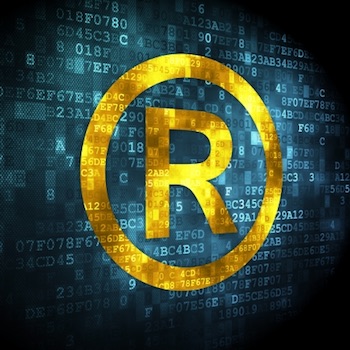 More than 10,000 trademark specialists, IP professionals, universities and academics attended the recent annual meeting of the International Trademark Association (INTA) in Barcelona in May. Held in Europe for the first time in three years, the event highlighted the changing role of trademark professionals in the technology era –a change from a legal role to one where trademark professionals are increasingly called upon to be brand experts.
More than 10,000 trademark specialists, IP professionals, universities and academics attended the recent annual meeting of the International Trademark Association (INTA) in Barcelona in May. Held in Europe for the first time in three years, the event highlighted the changing role of trademark professionals in the technology era –a change from a legal role to one where trademark professionals are increasingly called upon to be brand experts.
A Changing Role
Trademark specialists continue to face a more complex and uncertain environment in which to do their jobs. This is driven by a number of factors, including, but not limited to the increased growth in trademark filings. The United States Patent and Trademark Office (USPTO) reported in 2013 that, between 1985 and 2011, trademark filings grew at an average annual rate of 6.5%, outpacing GDP considerably. Since most trademark departments have not grown at the same pace, it is fair to say that those working in the industry are facing an increased workload from this aspect alone.
However, it is not just the volume of filings that is a challenge for today’s trademark professional. Technology is a key driver of a second trend in trademark management and brand protection. What follows are some of the major themes discussed.
The Challenge from Digital
The World Intellectual Property Organization (WIPO) noted that, in 2016, cybersquatting cases related to Top-Level Domains hit record numbers, with 3,000 reported cases representing an increase of more than 10 percent. Further, online counterfeiting, which was an issue of little or no concern to trademark professionals ten years ago, now needs to be front of mind for all businesses managing brands.
Social media platforms such as Twitter, Facebook and Instagram have provided the opportunity for brands to interact with mass audiences quickly and effectively, but this interaction is a two-way street. Increasingly the public is looking to social media as a vehicle to interact with brands when something goes wrong. Trademark professionals are having to consider not only which social platforms to deploy for their brands, but also work with marketing, communications and customer service teams to manage their brand’s presence online. Thinking of social media as “free” for those actively managing and promoting brands misses both the importance of the platform and the expectations of consumers in an increasingly connected world.
Protecting brands from false and spurious postings online has also become a daily part of the trademark role. It is simple for anyone to grab a trademarked logo from the web and share it – and increasingly difficult for consumers to recognize what is a genuine post from an authentic company, or one that is an unapproved use of a trademark.
An Increasing Workload
Brand representation is now a multi-lingual, global challenge. Any social media strategy needs to be intertwined with the general IP strategy of a business. Corporations and the law firms that support them are increasingly being asked to monetize intangible assets such as trademarks more effectively. Trademark disputes tend to be settled by “undisclosed damages” meaning it is difficult to estimate the precise financial risk, but estimates of the cost of trademark settlements are often in the hundreds of thousands of dollars, excluding the time and legal advice required to take on litigation or reach a settlement.
In the digital age, reputational damage can be significant. Anyone with access to mass media – and an ax to grind – can get their message out to a global audience. Negative publicity has the propensity to tarnish a brand’s reputation, and social shaming has totally changed the dynamics of how trademark disputes are handled.
Today, social media channels saturate every aspect of our business and consumer lives; the business world and the buyer’s world interact more than ever, and the potential for abuse seems limitless.
The Role of Technology in Brand Protection
One clear trend from INTA 2017 was the role that technology can play in enabling brands to more effectively manage these increasingly diverse issues. From web monitoring for brand infringements to the digitization of global trademark renewals, the event showcased how companies are deploying technology with the aim of driving increased efficiencies. The primary challenge is ensuring that all relevant information is referenced and managed effectively – through one technology platform that is as relevant to a corporate as it is to a law firm or a network of agents based across the globe.
As the role of a trademark professional transitions from a primarily legal role to a wider brand management position – encompassing new responsibilities, challenges, and partnerships — trademark executives at all levels need all the support they can get to manage the increased workload.
Technology has a critical role to play in supporting these professionals, but needs to be deployed in a manner where it delivers automation, drives efficiencies and provides trademark experts with the relevant tools to do their job more effectively. When the industry gathers again in Seattle in 2018, it will be those that have proactively deployed technology to drive efficiencies and offer insight that will be in the best position to lead the industry.

![[IPWatchdog Logo]](https://ipwatchdog.com/wp-content/themes/IPWatchdog%20-%202023/assets/images/temp/logo-small@2x.png)

![[Advertisement]](https://ipwatchdog.com/wp-content/uploads/2024/04/Patent-Litigation-Masters-2024-sidebar-early-bird-ends-Apr-21-last-chance-700x500-1.jpg)

![[Advertisement]](https://ipwatchdog.com/wp-content/uploads/2021/12/WEBINAR-336-x-280-px.png)
![[Advertisement]](https://ipwatchdog.com/wp-content/uploads/2021/12/2021-Patent-Practice-on-Demand-recorded-Feb-2021-336-x-280.jpg)
![[Advertisement]](https://ipwatchdog.com/wp-content/uploads/2021/12/Ad-4-The-Invent-Patent-System™.png)







Join the Discussion
One comment so far.
Drain the Swamp Man
June 22, 2017 01:14 pmIt’s too bad that both Trademarks and Patents use 40 Plus year old systems to do their work. Unfortunately they would have no idea what efficiency means in their legacy world.